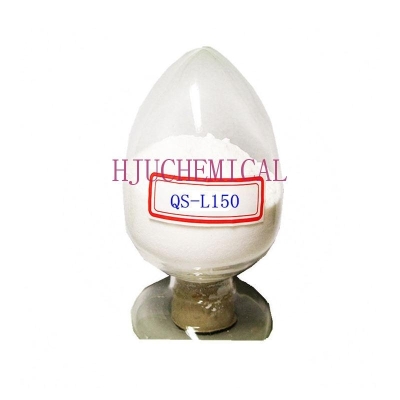-
Categories
-
Pharmaceutical Intermediates
-
Active Pharmaceutical Ingredients
-
Food Additives
- Industrial Coatings
- Agrochemicals
- Dyes and Pigments
- Surfactant
- Flavors and Fragrances
- Chemical Reagents
- Catalyst and Auxiliary
- Natural Products
- Inorganic Chemistry
-
Organic Chemistry
-
Biochemical Engineering
- Analytical Chemistry
-
Cosmetic Ingredient
- Water Treatment Chemical
-
Pharmaceutical Intermediates
Promotion
ECHEMI Mall
Wholesale
Weekly Price
Exhibition
News
-
Trade Service
Polycarbonate is an engineering plastic with excellent performance and wide application.
It has extremely high transparency and light transmittance of up to 89%.
It can meet many application scenarios with high requirements on optics and color, and it has certain flame retardant properties.
It can achieve V-2 flame retardant and is a self-extinguishing engineering plastic
.
However, in some application scenarios, it is necessary to achieve a V-0 flame retardant of 1.
6mm or even 0.
8mm, such as mobile phone cases and other electronic products, PC films, PC sheets and other fields, and to maintain the transparency of the PC, which has certain Difficult, however, the use of flame retardants can further improve the flame retardant rating of PC
.
At present, flame retardants for PC mainly include phosphate esters, silicones and sulfonates
.
1.
Sulfonate flame retardants
Sulfonate flame retardants
Sulfonate flame retardants belong to alkaline earth metal salts and have high flame retardant efficiency for PC products.
), potassium perfluorobutanesulfonate (PPFBS)
.
Flame retardant mechanism of sulfonate flame retardant:
Flame retardant mechanism of sulfonate flame retardant:At high temperature, sulfonate can promote the isomerization of PC, promote the release of carbon dioxide and water during combustion, promote the formation of phenolic substances, promote the production of aliphatic and aromatic compounds, and accelerate the carbonization rate of PC molecules.
Promotes crosslinking of polymer molecules
.
Sulfonates promote cross-linking to char, source: Internet
Potassium benzenesulfonylbenzenesulfonate (KSS)
Potassium benzenesulfonylbenzenesulfonate (KSS)
KSS is widely used, adding 0.
05%-0.
1% can increase the oxygen index of PC from 27% to about 37%, and will not affect the transparency of PC, but it cannot make thin-walled parts (thickness ≤2.
5mm when used alone).
) The flame retardancy reaches UL94 V-0 level, and it is often compounded with polysiloxane in practical applications.
If a small amount of fluoropolymer is added at the same time, the flame retardancy of the material will be better
.
Typical suppliers and grades: American Alichem/Sloss KSS F-535
2.
Potassium perfluorobutanesulfonate (PFBS)
Adding 0.
06%-0.
1% PFBS to the PC can make the PC achieve UL94 V-0 (3.
2mm), but it is still difficult to achieve the V-0 level of 1.
6mm or 0.
8mm
.
Compared with PFBS, KSS can make PC have higher transparency, but its flame retardant efficiency is lower, and the addition amount of the two is not linear with the flame retardant effect.
It is not that the more added, the better the flame retardant effect.
.
At present, the price of imported potassium perfluorobutanesulfonate can reach more than 1,000 yuan/kg, and the price of domestic products is generally around 500 yuan/kg.
The main quality difference lies in the stability of the product
.
Foreign suppliers mainly include Mitsubishi, 3M and other companies, while nearly 30 domestic companies produce this product
.
Some suppliers and brands:
2.
Silicone flame retardants
Silicone flame retardants
Silicon-based flame retardants are divided into inorganic silicon-based and organic-silicon-based flame retardants.
Inorganic silicon-based flame retardants have a serious impact on the toughness of PC and are rarely used
.
Silicone-based flame retardants are mainly polysiloxanes and polysiloxane derivatives
.
The flame retardant mechanism of silicon-based flame retardants is: silicon-based flame retardants easily migrate to the surface of the material at high temperatures to form a -Si-O- or -Si-C- structure, which can act as a heat insulation and At the same time, this porous structure can absorb smoke and poisonous gas during the combustion process, and has the effect of low smoke and low toxicity; in addition, silicon-based flame retardants also have the effect of promoting char formation
.
In addition to promoting the isomerization of PC and Fries rearrangement to promote carbon formation, phenylsiloxane also reacts with the phenolic hydroxyl group generated by Fries rearrangement to generate a phenyl-containing ether structure that is cross-linked into carbon
.
Polysiloxane suitable for PC flame retardant can be divided into two types: linear and branched.
Among them, linear polysiloxane flame retardant PC has good fluidity, high impact strength, good processability and recyclability; The branched-chain polysiloxane flame-retardant PC is easier to cross-link into charcoal, has better flame-retardant effect, and generates less smoke and toxic gases
.
Siloxane flame retardants are generally added in an amount of 1.
5-4wt%, which can reach UL 94 V-0 (1.
0-1.
5mm), which can keep the light transmittance of PC at about 87%
.
Most of the silicon-based flame retardants are added by physical addition, which requires high phenyl content in siloxane and good compatibility with PC; another way is to introduce siloxane monolayer during PC polymerization.
form a PC-siloxane copolymer, namely silicon copolymer PC
.
Silicon copolymer PC not only has good flame retardant properties, but also has good fluidity and low temperature toughness
.







